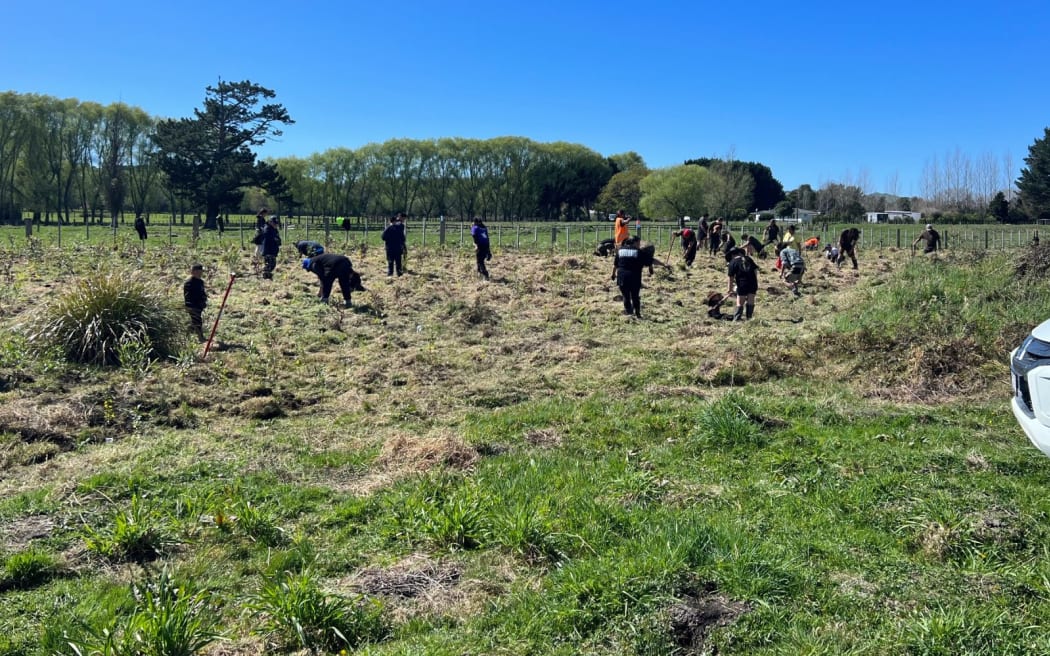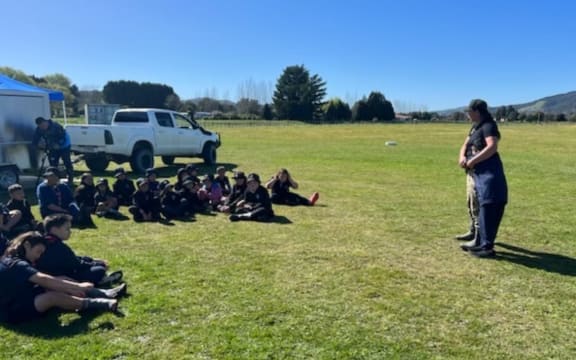Two thousand native trees have been planted by Ruatōria locals to protect their aerodrome from flooding.

Two thousand native trees have been planted by Ruatōria locals to protect their aerodrome from flooding. Photo: Muhunga Maru of Air Ruatoria / Supplied
The East Coast town was badly hit by Cyclone Gabrielle, with State Highway 35 closed for days and local roads unpassable. With no power or fuel the coast was cut off, save for flights in and out - in large part, using the Ruatōria aerodrome.
Pilot Paul Grayson said pilots from across the North Island flew in everything from kai to nappies - about two tonnes of supplies in total.
But the aerodrome was prone to flooding in certain areas during heavy rain.
So on Thursday, local schools and kaumatua got stuck in there, planting taonga species - including locally grown ngutukākā (kākā beak) - in the flood prone areas.
The planting was a collaboration between the Raukūmara Pae Maunga Restoration Project, Ruatoria Papa Rererangi Charitable Trust and Air Ruatoria, and was open to the public, with funding from the Endangered Species Foundation and Trees that Count by Project Crimson.
Local man Graham Atkins, an expert in taonga species and lead for the Raukūmara Pae Maunga Restoration Project, said the beautification of the aerodrome site ticked a lot of boxes and allowed local kids to get their fingers back in the dirt.
Past experience made the planting mahi manageable, he said.

Pilot Paul Grayson said pilots from across the North Island flew in everything from kai to nappies - about two tonnes of supplies in total. Photo: Muhunga Maru of Air Ruatoria / Supplied
"We're pretty sharp at this. I've been doing this for nearly 30 years, and we've got a couple of post hole borers which will dig the holes."
With the weather system switching to an El Niño pattern, dryer weather is on the cards for the East Coast.
"We just can't catch a break," Atkins said.
"One minute we're drowning and now we're going to be baked."
Deep holes would help the new plants find water, even in dry weather.
"Two thousand trees takes a lot of mahi to get them to grow, and get them to survive."
A section of the aerodrome, previously covered in weeds and prone to flooding, would now contribute to offsetting Air Ruatoria's carbon footprint.
Atkins said it was also an opportunity to honour the mahi of so many people who came to Ruatōria's aid in its time of need.
"Every taonga we plant is a mihi to the individuals, whānau, people and organisations who helped us."


